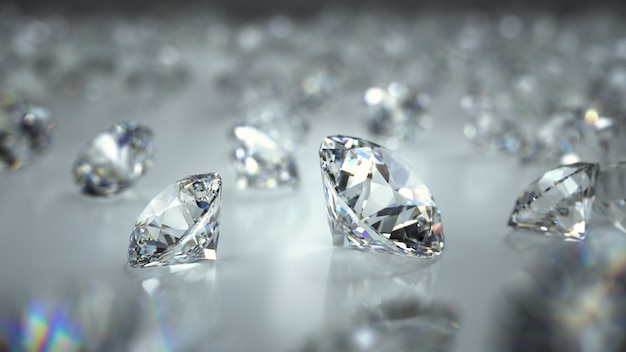
In recent years, lab grown diamonds and cultures have become an increasingly important topic of discussion as they challenge traditional perceptions of luxury and craftsmanship. As the demand for more sustainable and ethically sourced products grows, lab grown diamonds and cultures are gaining popularity across the globe. These diamonds, created in a controlled environment using cutting-edge technology, have been celebrated for their environmental benefits, affordability, and ethical considerations. In this article, we will explore how lab grown diamonds and cultures are redefining traditional practices, influencing modern values, and reshaping the way we think about love and commitment.
Understanding Lab Grown Diamonds and Their Cultural Significance
For centuries, diamonds have been synonymous with luxury, love, and status across various cultures. However, as environmental concerns and ethical sourcing become increasingly important, lab grown diamonds and cultures are helping shift attitudes about what makes a diamond valuable. These diamonds are created using methods that mimic the natural process of diamond formation, either through High Pressure High Temperature (HPHT) or Chemical Vapor Deposition (CVD). The result is a gemstone that is virtually identical to its natural counterpart in terms of chemical composition, appearance, and durability.
As lab grown diamonds and cultures become more widely accepted, they are being integrated into important cultural traditions, such as engagements, weddings, and family heirlooms. For many, lab grown diamonds offer an opportunity to honor these customs while making a conscious, sustainable choice. In cultures where diamonds hold significant emotional and cultural value, lab grown diamonds provide an alternative that aligns with contemporary ethical standards without compromising the symbolic meaning they carry.
Cultural Shifts: How Lab Grown Diamonds are Changing Perceptions of Luxury
In the past, luxury was often defined by rarity and scarcity. Lab grown diamonds and cultures are changing this perception, challenging the notion that only natural diamonds hold the key to luxury. Many cultures have long viewed diamonds as a symbol of exclusivity, but the availability of lab grown diamonds is disrupting these traditions. These diamonds are created with far less environmental impact and can be produced more efficiently, making them more accessible to a wider audience.
The shift toward lab grown diamonds and cultures also represents a broader societal trend towards sustainability and responsible consumption. Across various cultures, consumers are increasingly seeking products that align with their values, including environmental stewardship and ethical sourcing. Lab grown diamonds offer a luxury experience that doesn’t come at the cost of harming the environment or exploiting vulnerable communities. As such, these diamonds are reshaping the way luxury is defined in modern times.
Ethical Considerations: Lab Grown Diamonds and Cultural Traditions
For many cultures, the ethical considerations surrounding diamonds are just as important as their aesthetic qualities. Lab grown diamonds and cultures are closely intertwined when it comes to addressing the ethical issues that have plagued the diamond industry for centuries. Mined diamonds have long been associated with human rights violations, child labor, and the financing of conflict, often referred to as “blood diamonds.” These practices have caused significant concern in various cultural contexts, particularly in communities where these unethical practices have had direct impacts.
Lab grown diamonds offer a solution to these ethical dilemmas. Since they are created in a controlled environment, there are no concerns regarding exploitation or conflict financing. This has led to a growing acceptance of lab grown diamonds and cultures that value ethical practices. In cultures where integrity, fairness, and respect for human rights are important, lab grown diamonds provide a means to continue celebrating significant moments such as engagements and weddings without supporting harmful practices.
Affordability and Accessibility: Redefining Luxury Across Cultures
Another significant advantage of lab grown diamonds and cultures is their affordability. In many cultures, diamonds have been seen as an unattainable luxury reserved for the wealthiest individuals. However, the advent of lab grown diamonds has made these gems more accessible to a broader range of consumers. The reduced cost of producing lab grown diamonds means they are often priced lower than mined diamonds, allowing more people to experience the luxury of owning a diamond without the financial strain.
This shift is particularly impactful in cultures where the tradition of gifting diamonds for engagements or weddings is deeply embedded, yet the high cost of natural diamonds can be prohibitive. Lab grown diamonds and cultures are creating new opportunities for individuals in various socioeconomic backgrounds to partake in these traditions, ensuring that more people can enjoy the symbol of love and commitment that a diamond represents.
The Environmental Impact: Lab Grown Diamonds and Sustainable Cultures
One of the most important aspects of lab grown diamonds and cultures is their environmental impact. Traditional diamond mining has been linked to significant environmental degradation, including deforestation, water pollution, and habitat destruction. As concerns about climate change and environmental preservation continue to rise across the globe, many cultures are reevaluating their relationship with natural resources. In this context, lab grown diamonds and cultures are becoming increasingly popular because they offer an eco-friendly alternative to mined diamonds.
Lab grown diamonds are produced with far fewer resources and have a much lower carbon footprint compared to mined diamonds. This aligns with the values of sustainability and environmental consciousness that are growing in importance across various cultures. As awareness of the environmental impact of consumer choices increases, lab grown diamonds and cultures are being embraced as a way to honor cultural traditions without contributing to the harm of the planet.
Lab Grown Diamonds and the Future of Cultural Celebrations
As lab grown diamonds and cultures continue to evolve, it’s clear that they are here to stay. The integration of these diamonds into cultural celebrations and traditions signals a shift towards a more sustainable, ethical, and accessible future for luxury. From weddings to engagements, lab grown diamonds are providing a meaningful alternative that upholds the timeless beauty of diamonds while addressing the modern values of sustainability and ethics.
In cultures that have long been associated with diamond jewelry, lab made diamonds and cultures are helping redefine what it means to honor love, commitment, and tradition. As more people embrace these diamonds, we can expect them to become a permanent part of cultural celebrations worldwide. Whether for a wedding ring, engagement ring, or other symbolic piece of jewelry, lab grown diamonds and cultures offer a way to preserve meaningful traditions while supporting a more ethical and sustainable world.
Conclusion: The Enduring Legacy of Lab Grown Diamonds in Culture
The rise of lab grown diamonds and cultures represents a modern evolution of an age-old tradition. By combining the timeless beauty of diamonds with the values of sustainability, ethics, and accessibility, these diamonds are poised to redefine how we celebrate love, commitment, and culture. As more individuals and communities choose lab grown diamonds, it is clear that these gemstones will play an essential role in shaping the future of cultural celebrations worldwide. With their affordability, environmental benefits, and ethical advantages, lab grown diamonds and cultures offer a meaningful way to continue honoring cherished traditions while embracing the values that matter most in today’s world.






